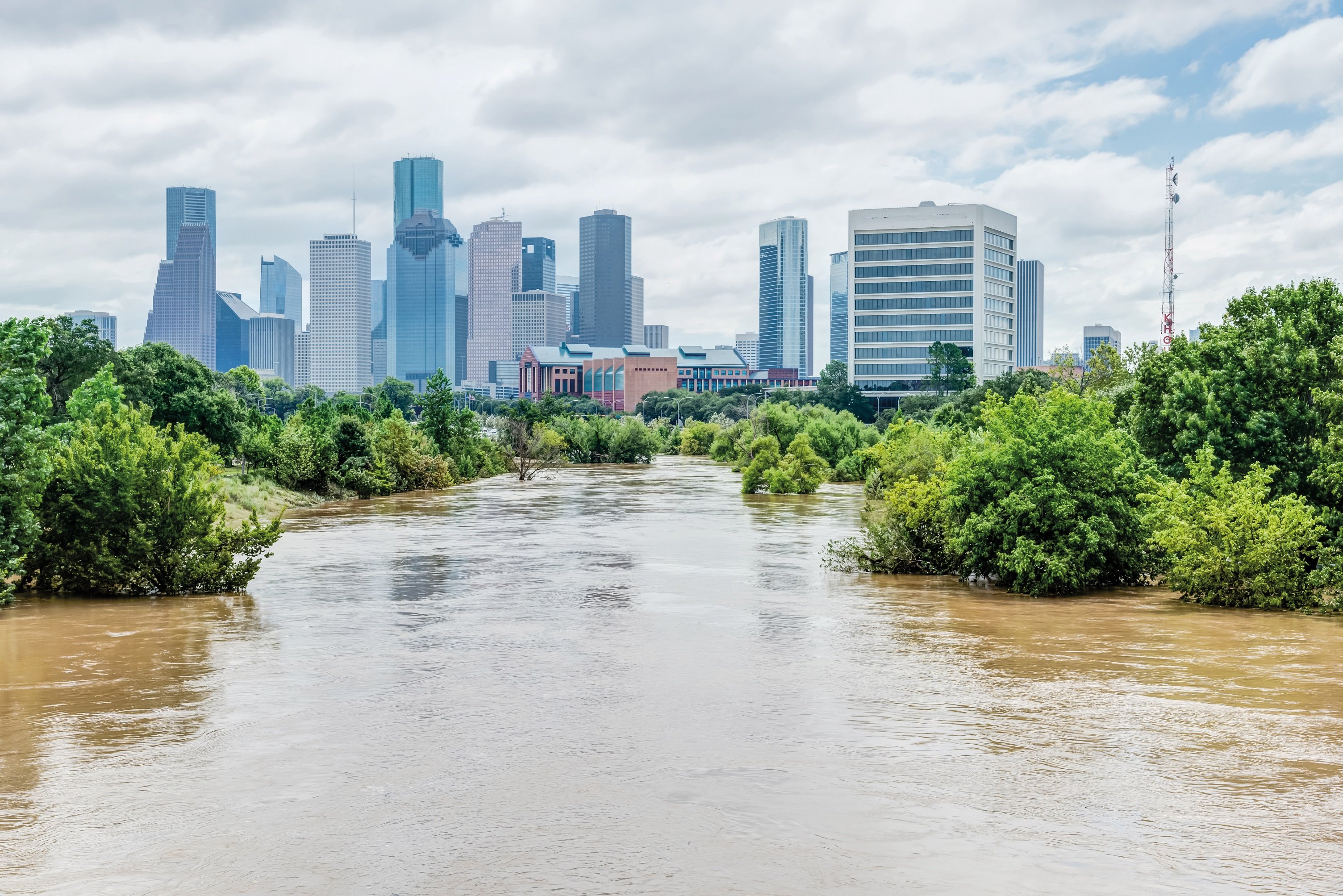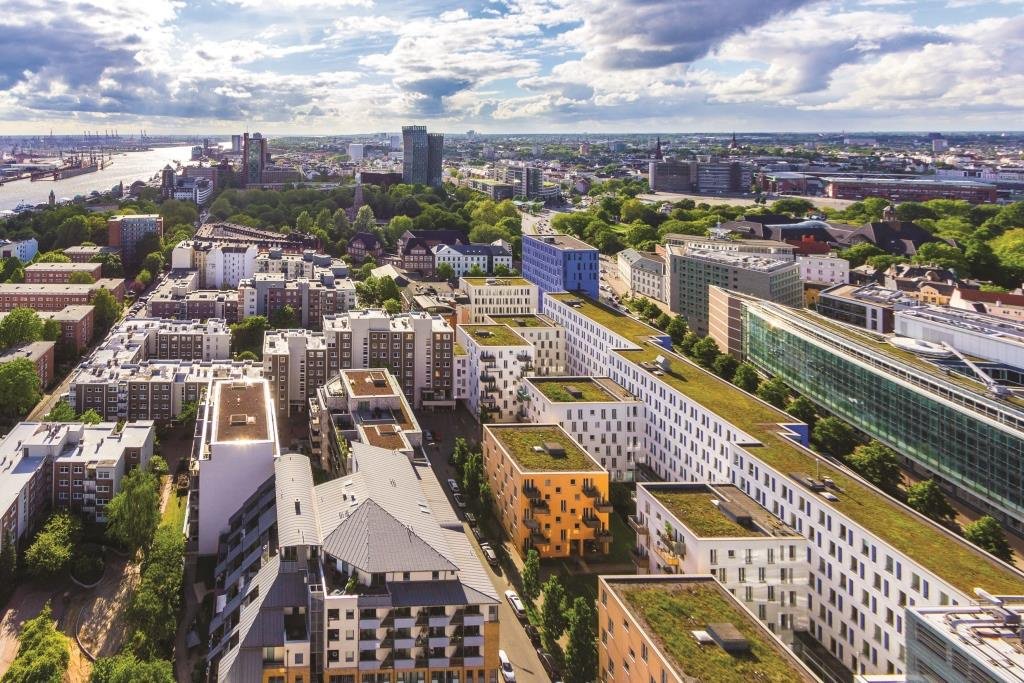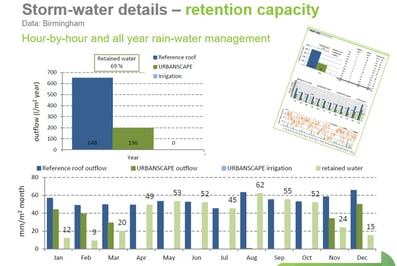Water damage caused by flooding is becoming a serious threat in the developed world. Caused both by extreme weather phenomena due to climate change, and by expanding cities, it is crucial to invest in prevention methods.
Surface water management is important as cities grow and more areas - rooftops, driveways, roads, car parking, and footpaths - are covered by impervious materials. This obstructs water from being absorbed into the soil and keeps it on the surface. As explained by professor Rebecca Wade from Abertay University: »That means water gets onto the roads and into drains more quickly, bypassing some aspects of the natural hydrological cycle« (1).
It is therefore worth looking at some of the ways we can better manage this excess water.
Why surface water is a problem - and how to deal with it
According to data, 2017 has been one of the wettest years on record. For instance - Malin Head, in the north-west of Britain, broke the record for the wettest summer day in 62 years when 77.2mms of rain fell on August 22 - including 63mm which fell over only a six-hour period, as reported by The Independent (2). Europe also experienced extreme weather in the beginning of 2018, with a powerful storm that brought strong winds and heavy rain to Ireland, UK, Germany, France, Switzerland, Austria and Italy. Trends have been showing an increase in such phenomena all around the world. Extreme weather tends to shock communities with threats to public safety, transport, energy and health. It poses a challenge to infrastructure, causing serious and costly damage.(3)
With rapid rainfall and large volumes of water entering the drainage systems in short periods of time, it has become clear that sewer systems tend to fail when faced with unpredictable weather and large amounts of runoff. This is a problem for many urban areas on a global scale, and needs to be approached systematically. One of the best options is the implementation of SUDS – Sustainable Urban Drainage Systems that aim to manage and restrain access water. So where do green roofs play a role in this system?

Green roofs and Sustainable Urban Drainage Systems (SUDS)
SUDS are an approach that aims to manage rainwater naturally. They are a sequence of techniques that form a management method for controlling the flow velocity of surface water, filtering and removing pollutants in the process.
The elements required to form a Sustainable Urban Drainage System are comprised of methods that decrease the volume of water entering the drainage network by means of interception of run-off water. Here's where green roofs come in - the absorbent layers accommodate water storage and subsequent evapotranspiration. In short, a green roof holds in access water and releases it back into the air by drying naturally. The next element is pre-treatment through vegetation that captures pollutants from surface water before releasing it back into the system - also provided by the green roof, but other vegetation can be added to the system, such as vegetated ditches on the ground. Retention systems delay the discharge of surface water to watercourses to prevent overflows. Infiltration systems, such as trenches and soakaways, allow water to soak water back into the ground naturally and at a more predictable pace. (4)
The system aims to catch and slow down the flow of water, improve the quality of water by capturing and treating the pollutants it contains, and benefiting the local community by expanding the green surface areas (1).
|
Download our Urban Smart Magazine and learn more about green roof systems and their benefits. |
Green roofs as a flood-prevention tool for cities
Green infrastructure technologies have become a commonly recommended solution to tackle extreme weather events. These include permeable pavements, bioswales, cisterns and, of course, green roofs.
According to GRIT Lab at the University of Toronto, green roofs are a green infrastructure (GI) option that can be applied to virtually any rooftop given weight load capacity. As explained by the researchers, their testing has shown that »Green roofs have the capacity to capture up to 70 percent of rainfall over a given time, relieving underground stormwater systems and releasing the rain water back into the atmosphere.« (5) Researchers at Penn University In Pennsylvania have come up with a slightly lower percentage, 50 to 60% of the rain falling on a green roof will be captured and evapotranspired back to the atmosphere, thus never entering the stormwater system. (6) This of course depends on the overall context, climate and build of the green roof in question, but it is safe to conclude that green roofs have a very significant impact, relieving more than half the volume of stormwater stress on drainage systems.
 Photo 2: Shutterstock
Photo 2: ShutterstockUrbanscape® Green Roof System products for stormwater management

This makes it perfect for both residential, non-residential and industrial buildings in urban areas. Extremely lightweight and easy to install, our Urbanscape® Green Roof System products are also ideal when dealing with existing infrastructure.
Blog written by: Ana Belčič, Studio MIAO
Sources:
- (1): How a garden on your roof could fight floods this winter - Rebecca Wade. Senior Lecturer in Environmental Science, Urban Water Technology Centre, Abertay University
- (2): https://www.independent.ie/irish-news/storms/2017-broke-records-for-winds-and-wet-summer-36457363.html (accessed 2018)
- (3) https://public.wmo.int/en/media/news/start-of-2018-marked-extreme-weather (accessed 2018)
- (4) https://www.bgs.ac.uk/research/engineeringGeology/urbanGeoscience/suds/what.html (accessed 2018)
- (5) How green roofs can protect city streets from flooding - Catherine Howell, Research Assistant, GRIT Lab, University of Toronto, Jennifer Drake, Assistant Professor of Civil Engineering, University of Toronto, Liat Margolis, Associate Professor of Landscape Architecture , University of Toronto, 2017
- (6) Green roofs for Stormwater - Albert R. Jarrett, Professor Emeritus of Biological Engineering and Robert D. Berghage, Associate Professor of Horticulture, University of Pennsylvania, Penn State Center, 2016
Photos sources: Shutterstock (1), (2) & Internal report (3)



